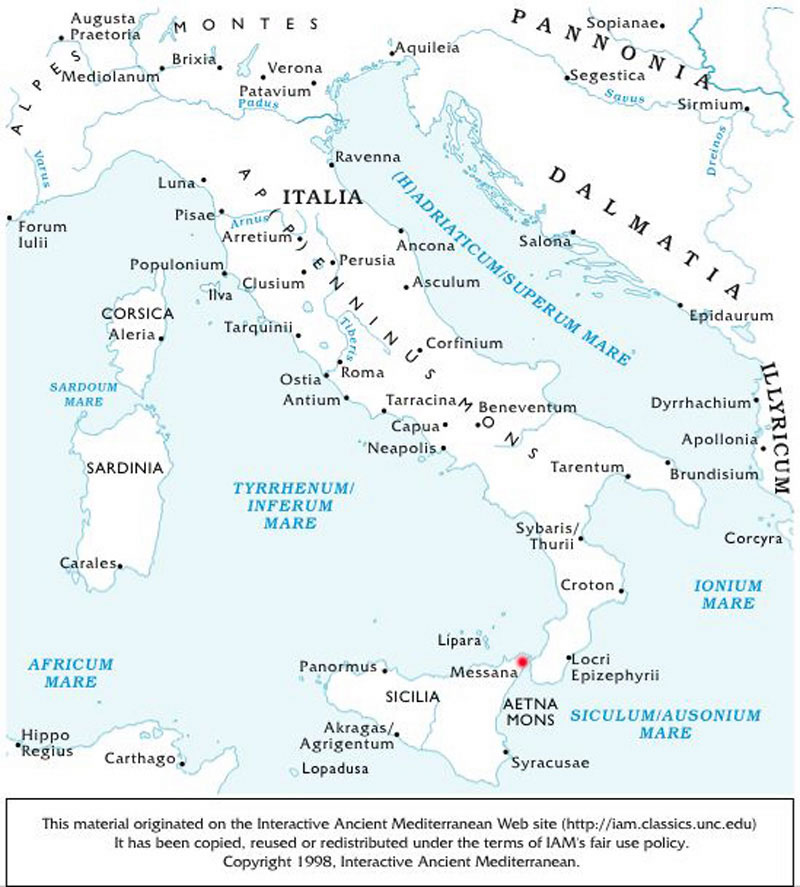In the early 5th century BC Messina was occupied by Greek fugitives from Persian-occupied Miletus and Samos. The fugitives were assisted by Anaxilas, tyrant of Rhegium (Reggio di Calabria), who then ruled over Rhegium and Zankle, the name of which he changed to Messene in honour of his native region of Messenia in the Peloponnese. After regaining its independence, the city was destroyed by the Carthaginian Himilco in 396 BC. It was reconquered and rebuilt by the Syracusan tyrant Dionysius and was later involved in the war between the Carthaginians and the Syracusan tyrant Agathocles. It fell in 289 BC to the Mamertini, Campanian mercenaries in the service of Agathocles, who made it the centre for their domination of Sicily. Pressed by Syracuse and the Carthaginians, the Mamertini allied themselves with the Romans in 264 BC, and Roman intervention led to the First Punic War, at the end of which Messene was a free city and an ally of Rome.When the western Roman Empire fell, Messana was taken successively by the Goths, the Byzantines (AD 535), and the Arabs (842). In the Byzantine attempts to reconquer the city, it suffered severe damage. Liberated in 1061 by the Norman leader Robert Guiscard (later Count Roger I of Sicily), the city prospered under the Normans as a commercial and cultural centre. The Swabian Holy Roman emperor Henry VI died there in 1197. When the Swabian dynasty ended with the death of Manfred in 1266, Messina passed to the Angevins (house of Anjou) of France and later, with the rest of Sicily, to the Aragonese and then to the Spanish Bourbons. It participated in the Risorgimento (movement for Italian political unity) risings in 1821, 1847, and 1848 and was liberated with the rest of the Kingdom of the Two Sicilies in 1860. (Encyclopaedia Britannica Online.)
